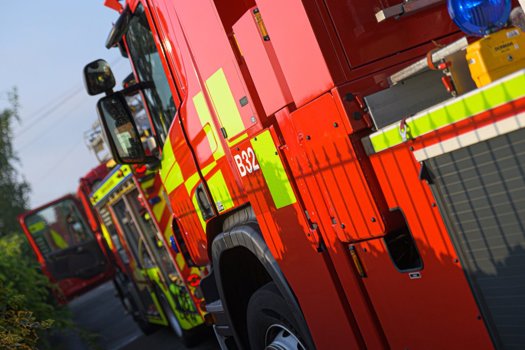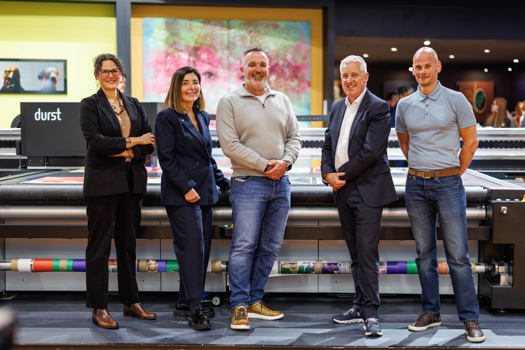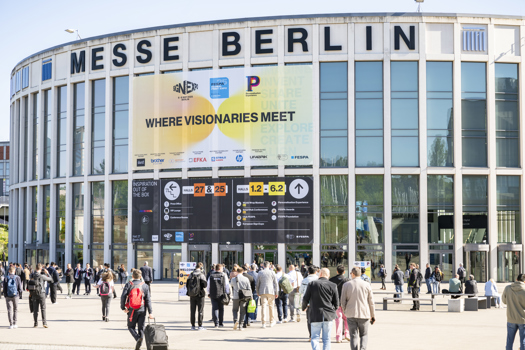The Wiltshire, UK-based printer's previous record was 278 makereadies and 1.8m impressions in a 156 hour week, and 202 makereadies and 1.9m impressions in a 160 hour week, on its two XL 75-5+L presses.
In achieving its new record, ESP billed out £198,455 in one week alone on its new XL 105 and has shaved an extra 15 seconds off its average makeready time, bringing it down from 4min 9sec to 3min 54sec.
ESP managing director Anthony Thirlby said: "The work we’ve done on the blanket wash has been huge for us in bringing that makeready time down again. If you look at a conventional makeready cycle, most people make a blanket wash between every section, running at the equivalent of 2,000 revolutions as the machine washes itself back up.
"The way we plan and profile the work means we’re going up incrementally in ink coverage so we minimise the blanket wash time [because] we don’t necessarily need to blanket wash between every section.
"What Heidelberg has done behind that is double the speed of the revolution, so you’re halving your blanket wash time every time you do a blanket wash. We’re saving over a minute on every blanket wash, which is huge for us when we’re doing the short run-lengths that we are."
Thirlby's drive for ever shorter makereadies and run lengths follows on from his strategy to reposition ESP as a hybrid printer, providing "a digital turnaround on a litho product".
"We purposely position ourselves to go down to the sub 5,000 market and fortunately as a strategy it’s worked out quite well," he explained. "We’ve gone from being 24 units of B1 to four B1 units and 10 B2 but I’ve got more capacity now than I did then by the very nature of us driving the run lengths down.
"When we were all B1 our average run was just shy of 20,000 and we've managed to get that down to 4,300 and the way that November’s numbers are looking we’ll be sub 4,000. All our revenue in terms of margin sits in the makeready and making plates, so the emphasis for the business is really still trying to get the run lengths down – in an ideal world if I could get down to sub 1,500 it would be fantastic."
That said, Thirlby is quick to point out that ESP still needs long-run work to enable its short-run strategy. "The long runs allow us to do all the transactional part of getting all the short-run work ready – so we still do the 150,000 runs, it’s just a case of ensuring that we have it at the right time during the week.
"So we’ve still got our volume accounts, which are very important to the business, but what we’re trying to do is understand more of the market about people having shorter lead times on marketing campaigns and preparing ourselves as a business to facilitate that. A lot of people don’t have the infrastructure to react completely to what the market demands – we’ve tried to keep ourselves a little bit ahead of that."
And when it comes to shorter print runs and quicker makereadies Thirlby has left no stone unturned in his quest for greater efficiency. All of the firm's presses have a double dryer configuration that allows the sheets to be instantly handled, turned and printed, while in finishing all of the firm's folders are fully automated and Thirlby has deliberately limited the number of formats ESP produces to allow maximum throughput.
"Whenever we invest we’ve always put a huge amount of automation, with our own rules in the front end, and we've always invested heavily in post press and not just focussed on the presses," says Thirlby. "Every folder now has full automation in it but we’ve also got our own bespoke integration interface that gives us all the real-time pulses back about our running speeds and productivity, so not only do we pre-set every folder configuration we get live streaming data back as well."
Meanwhile, ESP has also worked with consumables supplier Stehlin Hostag to develop a coating that will run at the maximum print speed of the XL 105 on lightweight stocks. "If you’re printing 18,000sph front and back, generally most peope will struggle to coat below 115gsm," said Thirlby.
"We’ve worked with Stehlin to try to understand the capabilities of the substrates we were running and done several tests on different coating configurations and we finally arrived at what they’ve called a low curl coat, which allows us to run down to 90gsm at 18,000sph front and back, which is quite a unique thing in the market."










